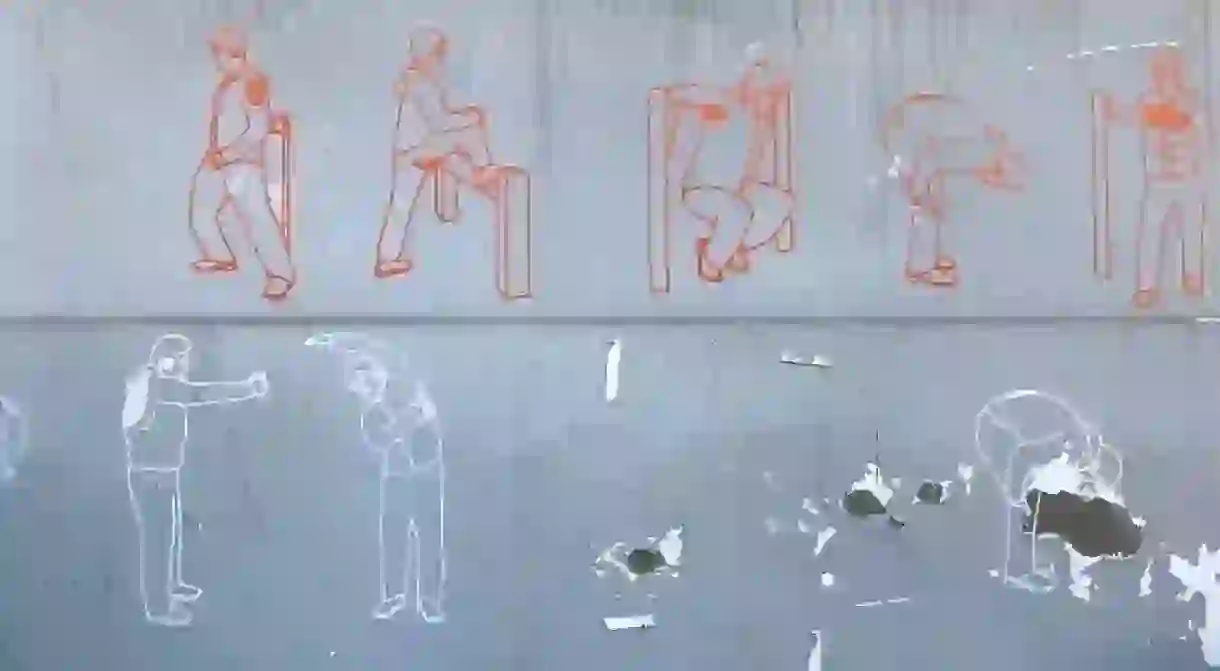An Art-Lover's Guide to Beijing

Beijing is a juxtaposition of rich traditional culture and vibrant contemporary art. Just the thought of the fact that the Forbidden City and the 798 Art District are in the same city is enough to give any art lover goose bumps. But Beijing’s art scene is much more than these two landmarks, and that’s why you’ll need this guide.
Must-visit museums and galleries
The Palace Museum
The Palace Museum, a.k.a. the Forbidden City, not only is a museum of architecture itself, but also boasts a collection of traditional Chinese artworks that is even larger than the National Museum of China. From time to time, the museum puts on exhibitions of some of its world-famous collections, like the scroll painting Along the River During the Qingming Festival. The museum is also the most ideal place to learn about imperial life in the Ming and Qing dynasties.
4 Jingshan Qianjie, Dongcheng District, Beijing, China, +8610 85007421

The National Art Museum of China
If you are a fan of Chinese art, then you shouldn’t miss the National Art Museum of China. It features over 100,000 pieces of artworks, mainly the works of Chinese painters and calligraphers like Su Shi, Qi Baishi and Xu Beihong.
1 Wusi Dajie, Dongcheng District, Beijing, China, +8610 64017076

UCCA
In recent years, especially with the transfer of the former 798 factory compound to an art district at the beginning of the 21st century, Beijing is witnessing the rise of contemporary art world. The Ullens Center for Contemporary Art (UCCA) is the bellwether of the galleries in the district. Eleven years since its opening, it has presented over 100 exhibitions, and has played an important role in the exchange of Chinese and international contemporary art.

Today Art Museum
Today Art Museum is another big name in Beijing’s contemporary art world. It is dedicated to introducing more Chinese modern artists to the public, and is keen on collecting contemporary on-canvas oil art by famous Chinese artists like Zhang Xiaogang and Wang Guangyi. Compared with the UCCA, Today Art Museum’s exhibitions tend to be more accessible to the public, such as the Junji Ito AR exhibition in 2017, and the Beatles exhibition from March to May 2018.
32 Baiziwan Road, Chaoyang District, Beijing, China, +8610 58760600

Former residences of artists
It’s a pity going to a loved artist’s city without visiting his or her home, where the artist gave birth to his or her masterpieces. Just like Amsterdam has the Rembrandt House Museum and Paris has the Maison de Victor Hugo, Beijing, as the cultural capital of China, used to be home to many Chinese artists, too.
Xu Beihong Memorial Hall
Xu Beihong (1895 – 1953), known for his Chinese ink paintings of galloping horses, is hailed as “Father of Chinese Modern Painting” for being one of the first Chinese artists to uphold the need for artistic expression in his work. When Xu passed away, his wife Liao Jingwen donated all the 1,200 some works he had left, along with one of their Beijing residences, to the public. The Chinese government converted the residence to Xu Beihong Memorial Hall and exhibits the artist’s works there. They also restored Xu’s painting room in the memorial hall, to give art lovers a better idea of how Xu worked.
53 Xinjiekou Beidajie, Xicheng District, Beijing, China, +8610 62252042

Mei Lanfang Former Residence
The former residence of Mei Lanfang’s is a place of pilgrimage for any Peking Opera lover. Playing the dan (female lead roles), Mei was believed to be the master who led to the popularization of Peking Opera in the West. The traditional courtyard house Mei used to live in is preserved as a museum, where his household items, costumes, and videos of his opera performances are exhibited. The blossoms of the crab apple tree in the courtyard every spring make the place even more heaven-like. It is as if you can see the Peking Opera master practicing right in front of your eyes when standing under the tree.
9 Huguosi Dajie, Xicheng District, Beijing, China, +8610 83223598-8001
https://www.instagram.com/p/BFHSLOtGr9g/?taken-at=1029808242
Chic Neighborhoods
Yangmeizhu Xiejie
The urban renovation program in Beijing has transformed some traditional hutong neighborhoods today, breathing the vigor named art and design into the once old-fashioned communities. Yangmeizhu Xiejie is an iconic example of the program. The 496-meter-long street near Dashilar is now home to both local residents and designers’ shops, such as Twelve Moons, a boutique gallery that sells beautiful illustrations, and Mo Fan Bookstore, a reading space that features the characters of the Republic of China era. The street also has some of Beijing’s best cafés and restaurants.














